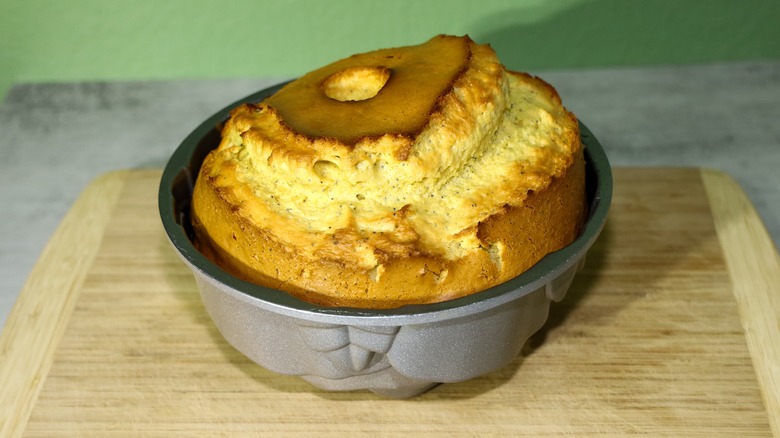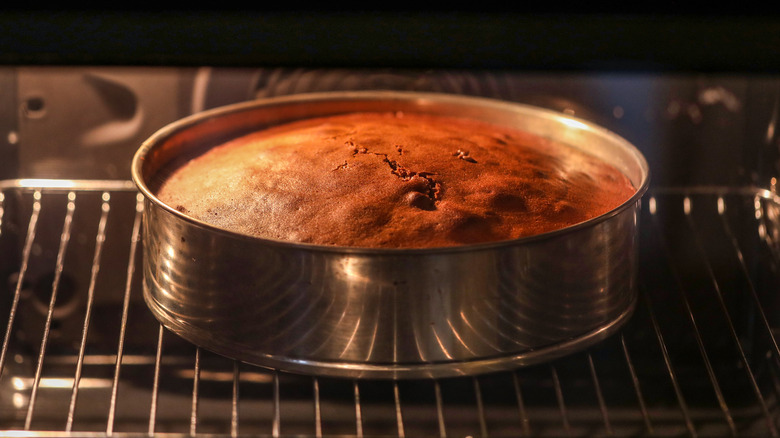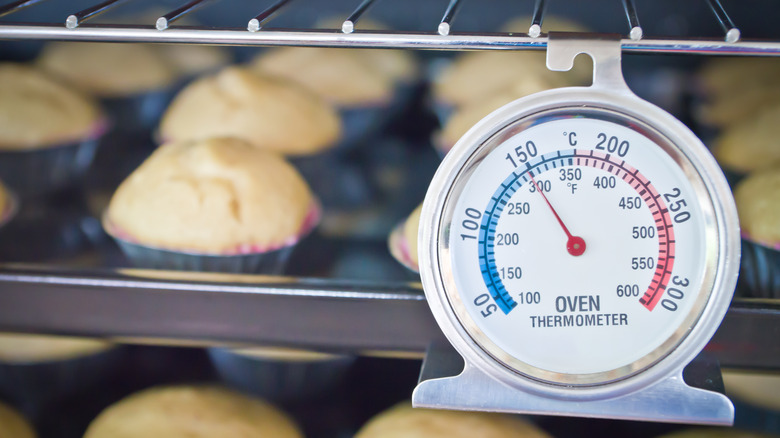Why Your Cake Is Doming (And How To Fix It)
Baking a cake — especially a layer cake — is a rewarding process when you get it right. After all the mixing, baking, stacking, and frosting ... to see those perfectly layered, perfectly round, perfectly flat tiers towered high and iced beautifully is a wonderful sight (one made even sweeter when the cake actually tastes good, too).
But there's a lot of science that goes into baking, and cakes are particularly finicky. If something goes wrong along the way, it may not quite bake the way you need it to; maybe it turns out too dense, or it sinks, or it cracks. There are lots of potential problems for those cake-bakers out there — and one of the big ones is doming.
A domed cake is what it sounds like — it's a cake that rises in the middle, coming out of the oven with a slightly taller, domed center rather than a flat, even surface. Not ideal when you need to neatly and evenly stack that cake with other cake layers. So why does this happen in the first place, and what can you do about it?
It's not you, it's your oven
There's a reason your cake is doming up rather than baking evenly, and chances are it's not anything you measured wrong while making the batter – the true culprit is your oven. To get into the science of it all, once your cake batter goes into the oven, the heat causes it to simultaneously rise and lose moisture; the cake officially sets (as in, it stops rising) when it gets hot enough and enough of that moisture evaporates.
According to Dr. Stuart Farrimond who wrote "The Science of Cooking," "When the batter gets to around 155 to 180 degrees Fahrenheit, it will start to firm up as the gluten proteins in the flour cook." (via Epicurious). When the cake domes in the center, that just means that the outer edges are getting to that point before the middle has a chance to — so the outside of the cake sets while the interior batter continues to rise. In layman's terms: your cake is doming because your oven is most likely too hot.
How to fix a domed cake before it's a problem
Don't always believe what your oven tells you — it can be a liar. An accurate, even oven temperature is key to making sure that cake bakes perfectly flat rather than domed, and a wrongly calibrated oven can sabotage that. The solution to nipping this problem in the bud? An oven thermometer.
An oven thermometer can help you determine an accurate reading of the actual temperature inside your oven (rather than the temperature your oven says it is). First, place your oven thermometer inside the oven and preheat your oven to a chosen temperature. Once it's preheated, check the oven thermometer and see if there's a big discrepancy between the thermometer reading and the oven's supposed temperature. Pro tip: try to read the thermometer through the oven door, without opening it, to prevent any loss of heat.
From there, you can recalibrate your oven based on its manual instructions (or call in a professional to do the job for you). At the very least, you know what the problem is and what the temperature discrepancy is — so you can work around it next time you bake.


